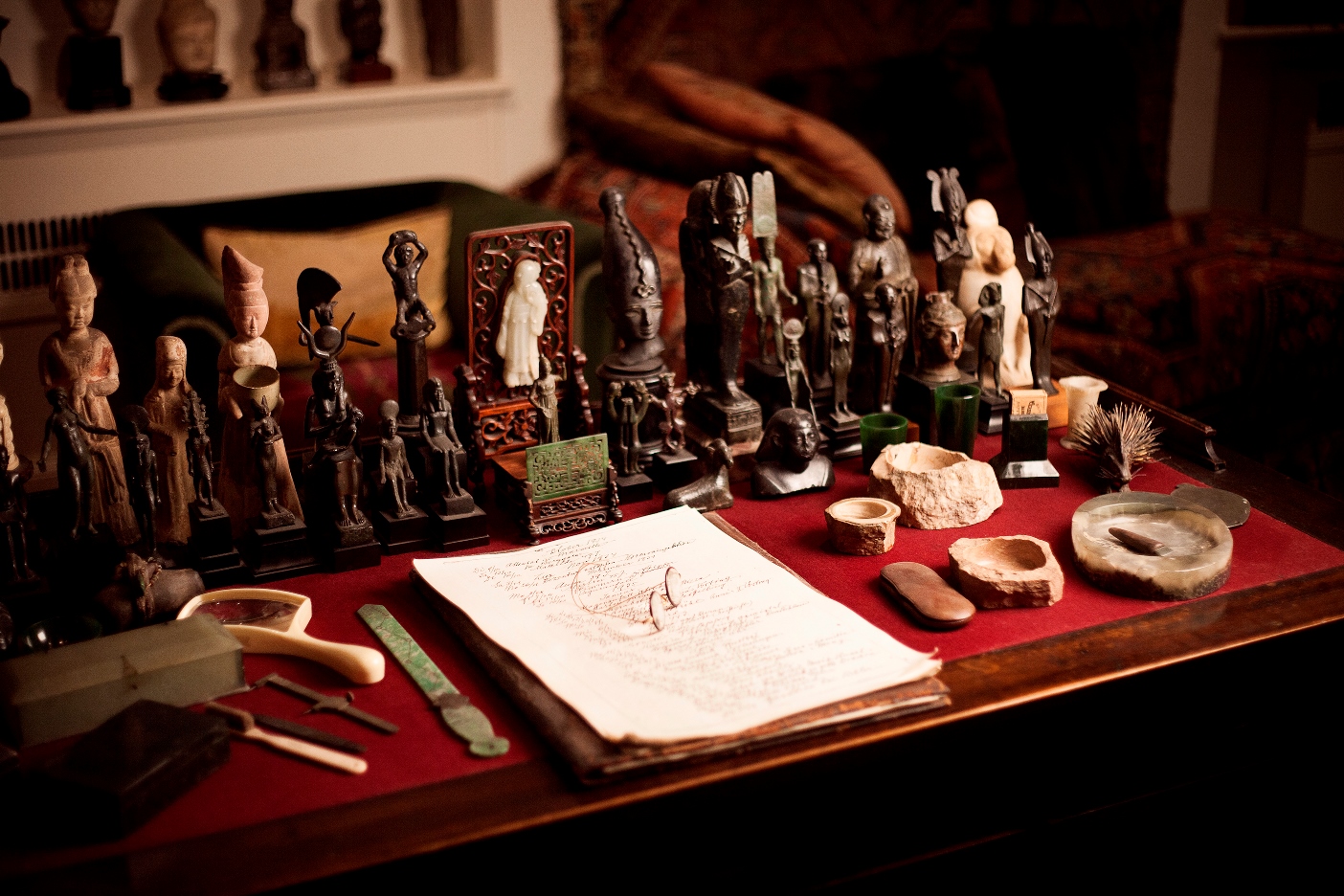About
 Courtesy Freud Museum London.
Courtesy Freud Museum London.
The Foundation for Art and Psychoanalysis is a cultural platform and registered charity that aims to support a wide range of creative and critical practices in order to contribute to the preservation of cultural heritage.
Conceived in 2013 by Camille Germanos Al Hasan, the Foundation has a collaborative ethos, fostering dialogues between creators, thinkers, as well as public and private institutions. Through a multifaceted exchange between the fields of psychoanalysis, social sciences, humanities, and the arts, we work to promote the potential of artworks as documents of an overlooked history, embodiments of social symptoms that precede and exceed the limitations of ‘official’ discourses.
As a platform that is committed to giving visibility to unconscious, erased, and excluded voices, our work is not constricted by format or geography. By ‘cultural heritage’, we understand a rich and complex field, which cannot be defined outside the particular conditions of a given society or without understanding how a specific community relates to crafts, architecture, music, literature, and visual arts. We are therefore equally appreciative of cultural production regardless of medium, nationality, or professional status of works and creators.
Witnessing the vestiges of past civilisations and vulnerable communities under the constant threat of destruction by war and financial speculation, the Foundation sees creation and preservation as intrinsically connected activities. As a registered charity, it is very important to us that our activity is not shaped by commercial forces and by the demands of the market. We preserve to create, offering present and future generations formative experiences with history, and we create to preserve, commissioning artists to produce works in response to current events. Given the fact that the act of creation is a gesture that touches on the universal, which impacts all people and builds both individual and society, we believe that making works and their history accessible to a large audience is a way to nurture collective memory.
To this end, we organise and assist in the development of events, performances, conferences, and exhibitions. Since 2020, we have started to build an Oral History Collection, featuring works by commissioned artists that re-interpret oral traditions and which are fully available online. Under the imprint of House of Publications, we also produce printed publications to further disseminate our work, understanding printed matter as an important mechanism of preservation.
ART AND PSYCHOANALYSIS
The development of psychoanalysis in the works of Sigmund Freud (1856-1939) is a pivotal moment in history. The implications that followed were broad and profound. Exceeding its clinical application, psychoanalytic theory has also come to set novel approaches to understand and interpret culture. These have been especially influenced by Freud’s elaboration of the dynamic unconscious
A dimension of human experience that had previously gone unnoticed, particularly due to the limited access the conscious mind has of it, the unconscious dispelled illusions of the mastery of the individual upon which modern society had been founded. Psychoanalysis, by finding strategies to read traces of the unconscious in dreams, bodily symptoms, and unintended gestures, was offered glimpses into a collective history of repression—as well as into the repression of history.
French psychoanalyst Jacques Lacan (1901-1981), in his 1950s ‘return to Freud’, posited the unconscious as being ‘structured like a language’ (un langage). This statement further contested a stable notion of subjectivity, in the ruins of which artists came to find places of resistance to now groundless power structures. As Lacan’s theory continued to be developed during the 1960s, another concept started becoming prominent which, like the unconscious, presented itself as impossible to be accessed. The Real—which, evasive to the grasp, ultimately evades its own definition—presents an impossibility of symbolic exchange in face of reality.
Freud was a great admirer of artworks. His consulting room in Vienna and, later, in London housed an impressive collection of antiquities; he wrote extensive essays on works by Leonardo, Michelangelo, and Dostoyevsky, and developed one of his best-known notions, the Oedipus’ Complex, from the Greek tragedy by Sophocles. His concept of sublimation— the displacement of libidinal drives towards the act of creation— allowed for a perspective on artworks as carrying marks not only of their creators but also of the way their contexts affect them. We have known since Freud that, like psychoanalysts, artists instruct us about the discontents of civilization, the state of the social bond, and the ways in which subjectivity is altered by its epoch. The potential of the artwork as disclosing, without exhausting, hidden social structures was later further emphasised by Lacan, who severed the connection between a given work to its creator so it could be read as a text. He detected in artistic creation the essential coordinates of the act by which subjects come to wrench themselves free from all their determinants.
It could be said that there are particular resonances between the unconscious, the Real, and the artwork. Indeed, when departing from psychoanalytic theory’s challenges to the stable subject, it is possible to encounter the artwork without subjecting it to preconceived conceptual frames. The artwork is thus able to embody traces of the unspoken, of the unspeakable.
HISTORY AND PSYCHOANALYSIS
What Freud discovered and called the unconscious is a novel form of knowledge; it is an unwitting knowledge, which provokes new and necessary approaches to history. When the Freudian subject ceases to be master in its own house, other normative forms of organisation of knowledge are also put into question. The dogmas of religion, natural science, and capitalism therefore no longer serve as pillars to a universal, colonising truth.
The unconscious is history. By ridding itself of its gods and ontologies rendered void by the discourse of science, the modern subject, unlike the subject in pre-modern societies, had to invent singular solutions to avert the encounter with the horror of the Real (of castration, of lack, of the emptiness of origins). This is where the field opened up by Freud encounters and challenges the discourse of science: by raising the question of the subject that is systematically excluded by the method of scientific reasoning, psychoanalysis reveals both the place where it is bound to science and its own field, which is radically exterior to science.
The unconscious is, furthermore, political. It not only houses the echoes of civilization, but also sustains and renews the social dimension of communal life.
The evasive, material dimension of the artwork, in its intrinsic relation to the unconscious—whether though the Freudian possibility of sublimation or the Lacanian textual rendition—is able to anchor history outside ruling discourses, outside the power structures such discourses seek to maintain. It ultimately prompts new forms of connection. The act of creation is understood as a political manifestation in itself, which is infinitely broader than discourses that, appropriating artworks for a determined political position, seek to suppress the genesis of art and the plurality of history.

The Foundation for Art and Psychoanalysis is registered in the UK.
Registered Charity Number 1186928






